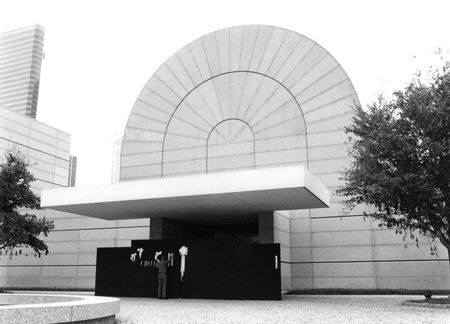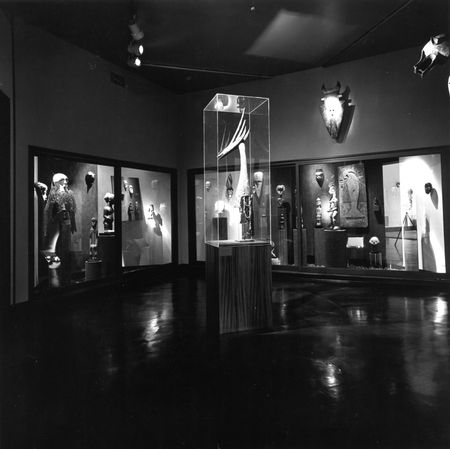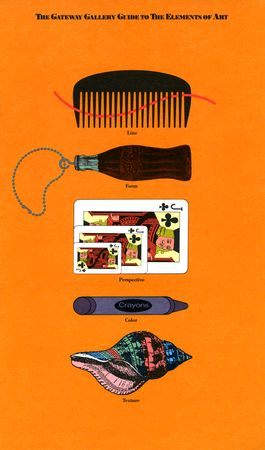
Memorial Wall in front of the Flora Court entrance for A Day Without Art, 1989
On December 1, 1989, the second annual World AIDS Day (a global public health campaign initiated by the World Health Organization), the DMA participated in A Day Without Art: A National Day of Action and Mourning in Response to the AIDS Crisis.
Visual AIDS, an organization of art professionals committed to facilitating AIDS-related exhibitions and events, conceived A Day Without Art as a call to arts organizations to recognize the effect of AIDS on the art community.
The aims of the day were to 1) commemorate losses of artists and arts professionals; 2) create greater awareness about the spread of AIDS; 3) publicize the needs of people with AIDS; and 4) call for greater funding of services and research.

Flyer for A Day Without Art activities at the DMA
The DMA worked with five Dallas-area artists to determine the most appropriate program for A Day Without Art. Lead artist Greg Metz, in collaboration with Pam Dougherty, Sean Earley, Jerry Janosco, and Brian Overley, conceived the presentation as a bleak confrontational memorial to the widespread, continuing art community deaths. It consisted of three parts.
1. The artists constructed black Memorial Walls to impede direct access to the Museum’s three public entrances. The temporary walls were installed for 24 hours, from 4:00 p.m. on Thursday, November 30, 1989, to 4:00 p.m. on Friday, December 1, 1989. The walls displayed white ribbons with the names of those in the Dallas art community who had died or were diagnosed with AIDS. Members of the community were invited to remember loved ones, artists, and art community members by adding their own white ribbon.
2. The evening of Thursday, November 30, featured a sound installation and performance by electronic performance artist Jerry Hunt, and donations benefiting the Dallas AIDS Resource Center were accepted.
3. An electronic counter was installed in the Concourse, marking the World AIDS Death Toll, which at the time was one death every 17 minutes.

A Day Without Art Memorial Wall at Ross Plaza entrance
Over 400 arts institutions responded to A Day Without Art in a variety of ways, from closing, to darkening a gallery or shrouding artworks, to sponsoring educational or remembrance programs.
Hillary Bober is the Archivist at the Dallas Museum of Art.




































![Director Harry S. Parker III with children in the Gateway Gallery, 1984 [Photographer: Tim Mickelson]](https://blog.dma.org/wp-content/uploads/2014/10/gateway_gallery_002.jpg)


![Children explore a mirrored Room of Infinity to understand perspective [Dallas Morning News]](https://blog.dma.org/wp-content/uploads/2014/10/gateway_gallery_kids_001.jpg)



![Planetarium equipment, circa 1953 [The Jerry Bywaters Collection, Southern Methodist University]](http://blog.dma.org/wp-content/uploads/2014/08/dmfa_planetarium_1953-1956_001.jpg)